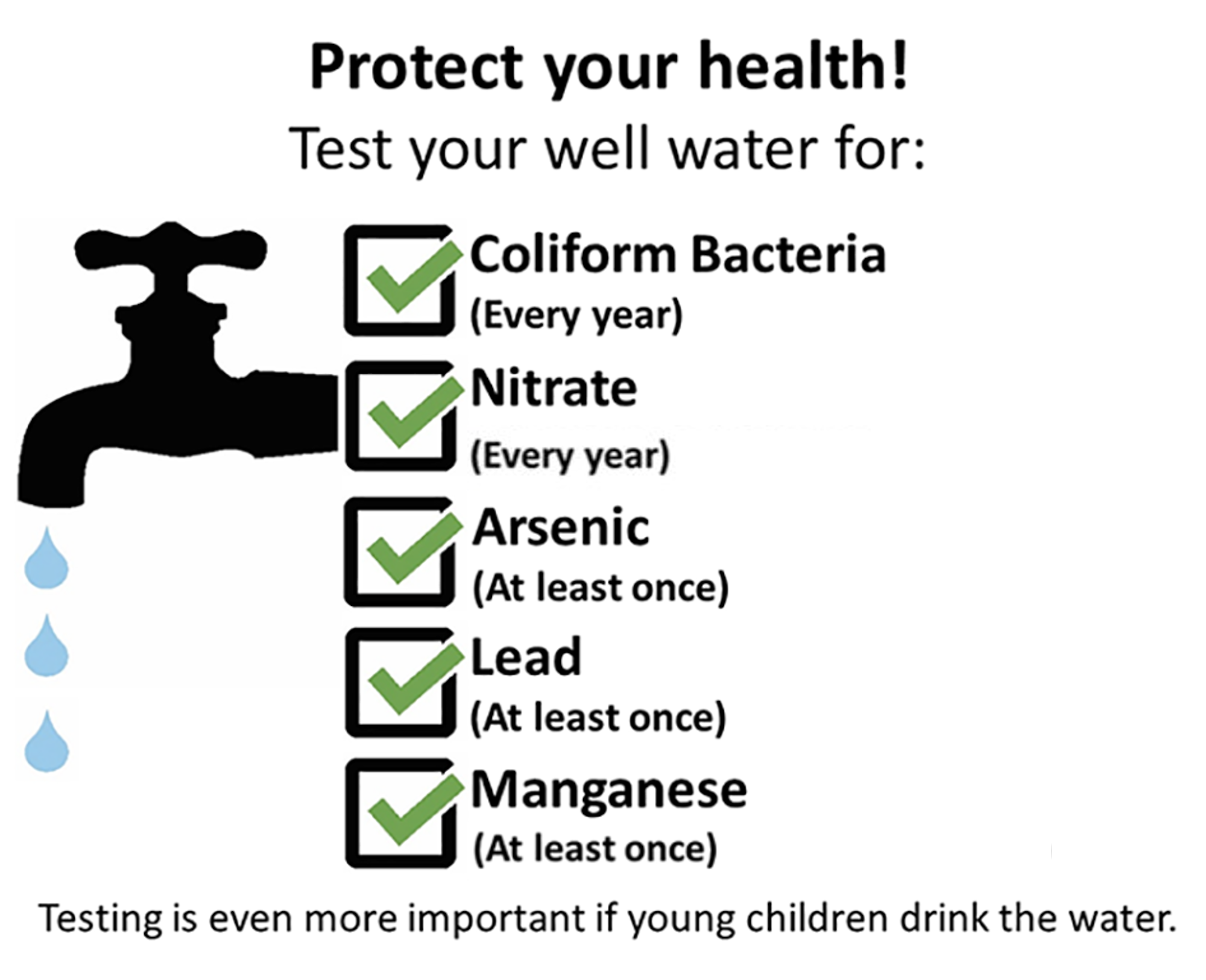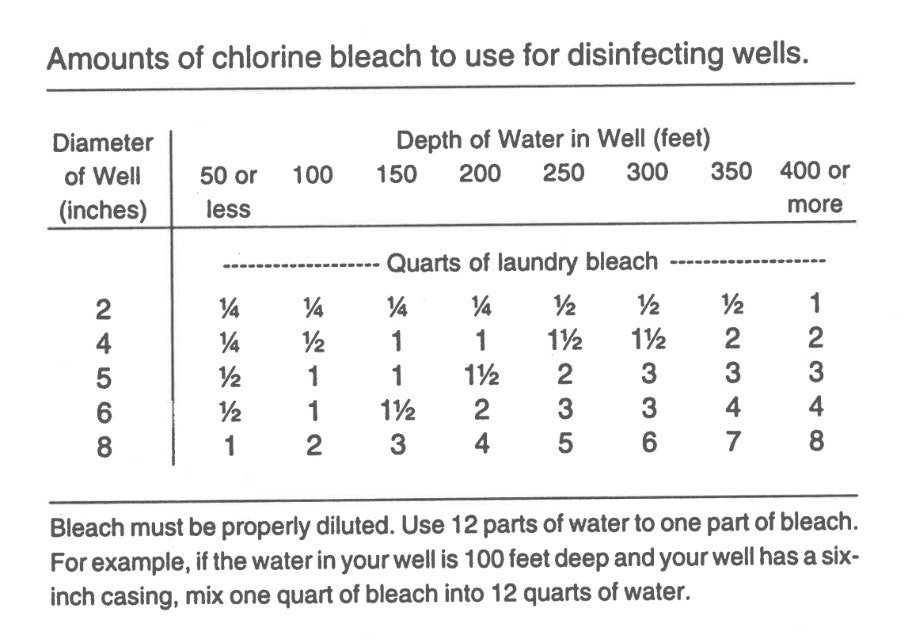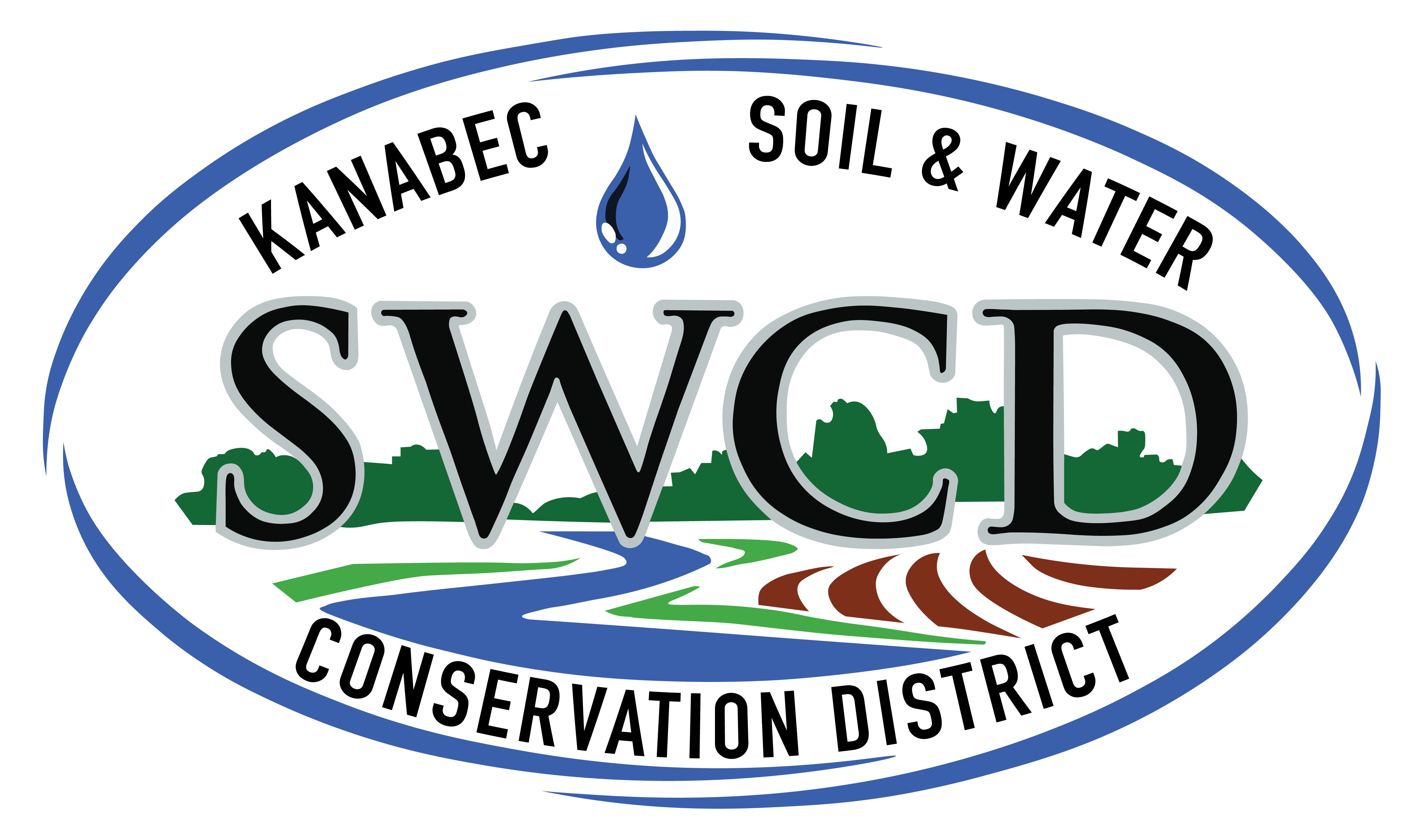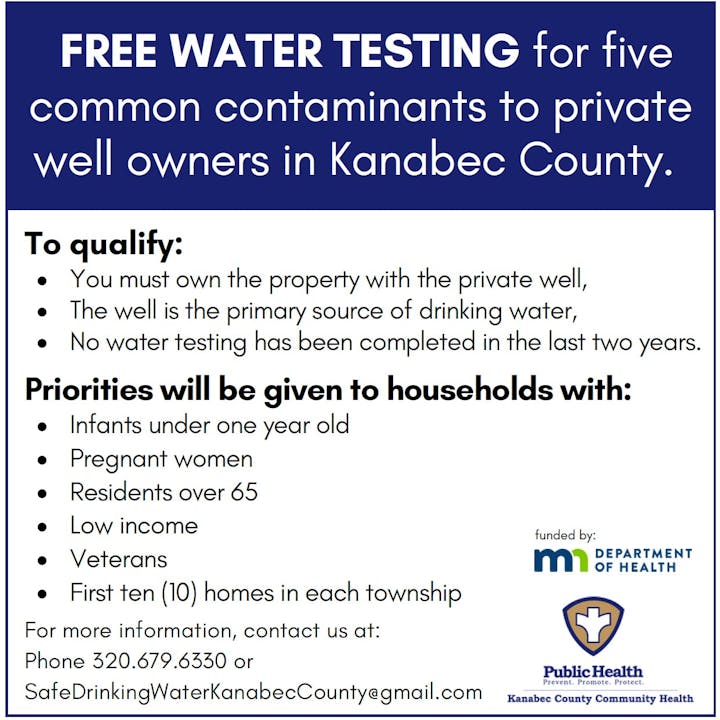Well Testing and Safe Drinking Water from Wells in Flooded Areas

Introduction
If your well has been inundated with floodwater, you need to disinfect it to assure a safe domestic water supply to protect your family’s health. Floodwater carries bacteria, viruses, parasites, and other pathogens (disease-causing organisms), as well as chemicals.
Diseases such as dysentery, hepatitis and giardiasis can be transmitted through private wells that have been contaminated by floodwaters. Man-made chemicals—such as pesticides, solvents, and petroleum-based products—can pose a health risk. Nitrate, a particular risk for infants and pregnant women, can be introduced to wells by flooding.
Sediment that enters your well during flooding can cause problems for your pumps and plumbing system. Bacteria that create a rotten-egg smell and stain plumbing fixtures or laundry may also be introduced by floodwaters. Although these do not present a health risk, they are a nuisance that can be eliminated through disinfection.
Where to Disinfect
If the floodwater covered your wellhead (the top of the well at or above ground level), you need to disinfect the well and then test to make sure pathogens have been eliminated. If you have a shallow sandpoint or driven well and floodwaters approached it, even if the well was not inundated you should disinfect it to assure a safe water supply.
Boiling your water at a full rolling boil for 5 to 8 minutes should be used as a temporary measure to protect against contaminating bacteria. Household water treatment systems will not provide sufficient protection and may themselves need to be disinfected. Sediment will clog these systems and high levels of certain chemicals can overload their capacity. Membranes, cartridges and filters within water treatment devices should be replaced. Water softeners and water heaters should also receive special attention because they will serve as sources to reintroduce bacteria into your water system if not properly disinfected.
Bacteria and other living organisms can be killed through disinfection with chlorine, but disinfecting the well will not remove other chemicals or sediment. If you suspect nitrate or man-made chemicals have been introduced to the well, use an alternate water supply until you can confirm it is safe. Purchase or carry your water from a known safe source.
Shock chlorination of a private well is a relatively simple process, but contractors or plumbers could be hired to disinfect it for you. It is important to thoroughly disinfect both the well and the household plumbing so that no places remain where bacterial pathogens can survive to recontaminate your water supply.
Chlorine bleach will not be as effective if the water is muddy or cloudy, so you should wait until the water is clear before you begin to disinfect it. You can pump water for several hours to see if that clears up such muddiness, but if pumping does not work you may just have to wait for the sediment to settle before you disinfect your water.
How to Disinfect
To guarantee that pathogens are completely eliminated, you need to expose them to chlorine at a sufficient concentration for an adequate time period. Thus, both the amount of chlorine you add and the length of time you allow it to stand are important considerations. The chart in this fact sheet will help you judge how much bleach to add, depending on the diameter and depth of your well. The chlorine bleach should be diluted with water so you are not working with a concentrated solution. Be careful to not excessively exceed recommended levels of chlorine bleach, because the excess will be hard to remove from your system and it will adversely affect your water’s taste.
For a shallow well, you can use any laundry bleach containing a 5.25% hypochlorite solution. For a deeper well, you may want to use chlorine in a solid tablet or pellet form (sodium hypochlorite), available from well drillers. The pellets settle to the bottom of the well and dissolve to ensure the entire water column is disinfected.
After you have disinfected the well and household plumbing, a follow-up test to make sure the water supply is safe is very important. The procedure described below should make your well safe, but any bacteria remaining in the system will reproduce and will be detectable in a water test after 48 hours.
The water should be tested at a lab certified by the Minnesota Department of Health. Test for coliform bacteria and nitrate-nitrogen as indicators of water contamination. Tests for coliform bacteria and nitrate-nitrogen will cost about $60 at a lab.
Steps for Disinfecting
Step 1
Remove cap from the well. There are many types of well caps. If you have questions, contact your well driller for assistance. There are certain guidelines for wells with submersible pumps to ensure the chlorinated water gets past the pump seal. See MES bulletin FO-5941, Treatment Systems for Household Water Supplies: Chlorination, for details.
Step 2
Pour the mixed chlorine/water solution down the well, trying to coat the sides of the casing as you pour. If you get chlorine on the pump or wiring, flush thoroughly with fresh water so the stainless steel or other surface coating doesn’t corrode.
Step 3
Turn off the hot water heater–chlorine is not as effective at temperatures above 105 degrees. You may want to bypass your water softener, but if contaminated water has passed through the softener, you must take steps to disinfect it also.
Step 4
Run water through all service lines in the house until you detect the odor of chlorine at each tap. Make sure you run the chlorinated water through every faucet in the system. You may also want to flush the toilets.
Step 5
Let the chlorinated water stand in the system for 8 to 12 hours.
Step 6
Flush out the system beginning with your well. Use a hose connected to an outside faucet and flush the system to a ditch or driveway. This large volume of chlorinated water should not be flushed through your septic system or run on delicate plants or the lawn. After water from the well is free of the chlorine odor, flush the rest of the household plumbing. This small volume of chlorinated water in your service pipes should not damage the septic system.

Nitrate in Well Water (info sheet)
Nitrate in Well Water - English [PDF]Nitrate in Well Water - Hmong [PDF]Nitrate in Well Water - Somali [PDF]Nitrate in Well Water - Spanish [PDF]If a test shows lingering bacterial contamination, shock chlorinate again and retest. If there is nitrate contamination above the health-based advisory of 10 parts per million, find an alternative water supply until the problem is resolved. The well should be tested again in about three months to be sure that bacteria have not returned.
Well Testing, Results, and Options (info sheet)
Well Testing, Results, and Options - English [PDF]Well Testing, Results, and Options - Hmong [PDF]Well Testing, Results, and Options - Somali [PDF]Well Testing, Results, and Options - Spanish [PDF]Certified Water Quality Testing Labs
[Online Tool] Current Database of Minnesota Department of Health Accredited Laboratories
(article by Barb Liukkonen, MES-BWSR Water Quality Educator)

